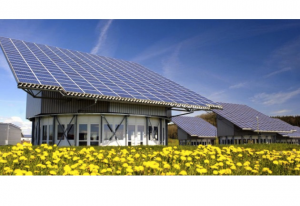. .. SUSTAINABLE DEVELOPMENT .. .
An article by Lorraine Chow for Ecowatch
Germany’s “Energiewende”—the country’s low-carbon energy revolution—turned another successful corner last weekend when renewable energy sources nearly stamped out coal and nuclear.
Thanks to a particularly breezy and sunny Sunday, renewables such as wind and solar, along with some biomass and hydropower, peaked at a record 85 percent, or 55.2 gigawatts, and even came along with negative prices for several hours at the electricity exchange.

Conversely, coal use was at an all-time minimum. According to DW, on April 30, coal-fired power stations were only operational between 3 and 4 p.m. and produced less than eight gigawatts of energy, well below the maximum output of about 50 gigawatts.
“Most of Germany’s coal-fired power stations were not even operating on Sunday, April 30th,” Patrick Graichen of Agora Energiewende told RenewEconomy. “Nuclear power sources, which are planned to be completely phased out by 2022, were also severely reduced.”
Graichen added that days like Sunday would be “completely normal” by 2030 thanks to the government’s continued investment in the Energiewende initiative.
Following the Fukushima disaster in Japan, Germany announced in May 2011 that it plans to phase out nuclear and shut down all its nuclear power plants by 2022. That Sunday, nuclear power plants reduced their output from 7.9 to 5 gigawatts.
Germany’s ambitious energy transition aims for at least an 80 percent share of renewables by 2050, with intermediate targets of 35 to 40 percent share by 2025 and 55 to 60 percent by 2035.